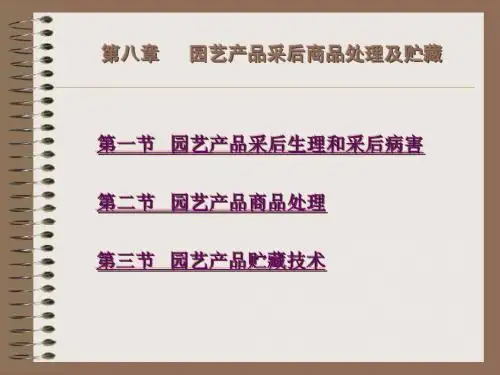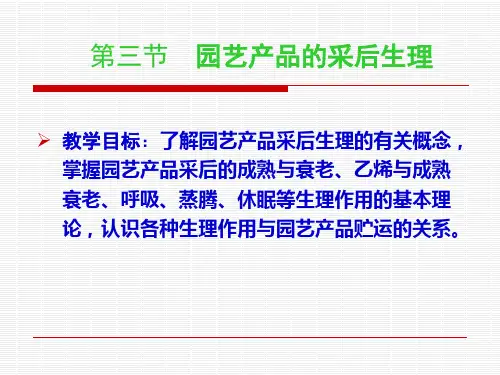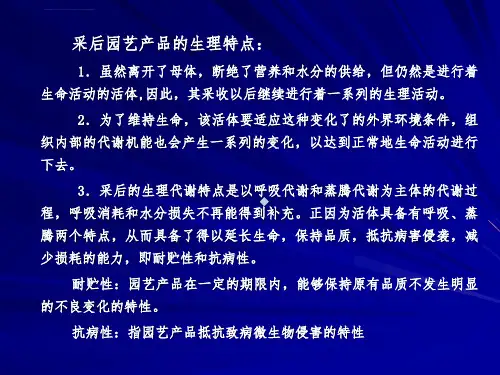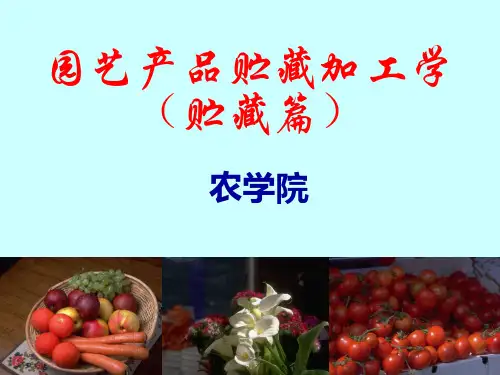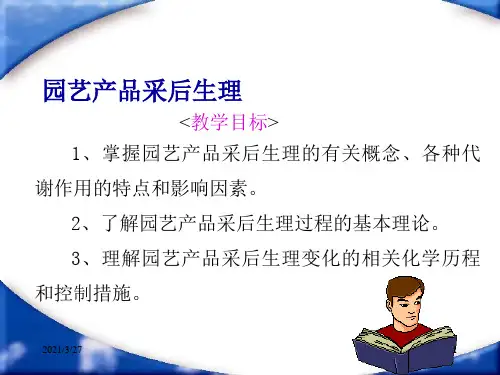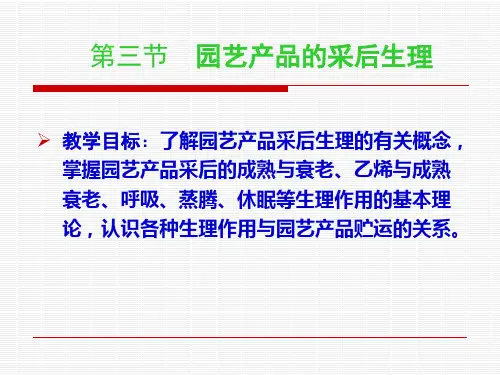01
C6H12O6+6O2→6CO2+6H2O +能量
02
温度(冷藏) 底物和产物浓度:低氧、高CO2(气调) 成熟激素乙烯:(低乙烯贮藏,1-MCP的应用)
03
酶的催化:
04
一、呼吸作用的概念、生理意义和场所
(2)缺氧呼吸(anaerobic respiration)一般指在无氧条件下,细胞把某些有机物分解成为不彻底的氧化产物,同时释放能量的过程。 C6H12O6 → 2C2H5OH+2CO2+87906J,2mol ATP C6H12O6 → 2H3COCOOH+4H→2CH3CHOHCOOH+75348J 同样消耗1分子的6C糖,只产生2分子的ATP,若要维持正常的生命活动就要比有氧呼吸消耗多得多的底物。 缺氧呼吸的特点: ①在缺氧(O2不足的)情况下进行;②产生的能量物质少,消耗营养物质多;③产物乙醛、乙醇对贮藏不利。生产实践中,控制呼吸的一种重要手段就是降低环境中的O2的浓度,那么怎样能通过降O2既可抑制呼吸,又不诱导缺O2呼吸的产生呢?
2.呼吸作用指标
呼吸轻度的测量 Measuring the Rate of Respiration: The rate of any reaction can be determined by measuring the rate at which the substrates disappear or the products appear. Apart from the water produced by respiration, which is relatively trivial compared to the very high water content of most harvested commodities, all the substrates and products of respiration have been used to determine the rate of respiration. They are loss of substrate, eg., glucose, loss of O2, increase in CO2, and production of heat. The most commonly used method, is to measure production of CO2 with either a static or dynamic system. In a static system, the commodity is enclosed in an airtight container and gas samples are taken after sufficient CO2 has accumulated to be accurately detected by any one of a number of commercially available instruments, eg., gas chromatograph or infrared CO2 analyzer(红外二氧化碳分析仪). If the container is properly sealed, CO2 should increase linearly with time. Multiplying the change in concentration times the container volume and dividing by weight of the commodity and duration of time between samples gives the production rate. In the dynamic system a flow of air (or other gas mixture) is passed through the container at a known rate. The system will come into equilibrium (> 99.3%) in about the same time it takes for 5-times the volume to flow through the container. The difference in CO2 concentration between the inlet and outlet is measured after the system has reached equilibrium by taking gas samples at both points and analyzing them. Multiplying the difference in concentration by the flow rate and dividing by the weight of the commodity is used to calculate the production rate.
